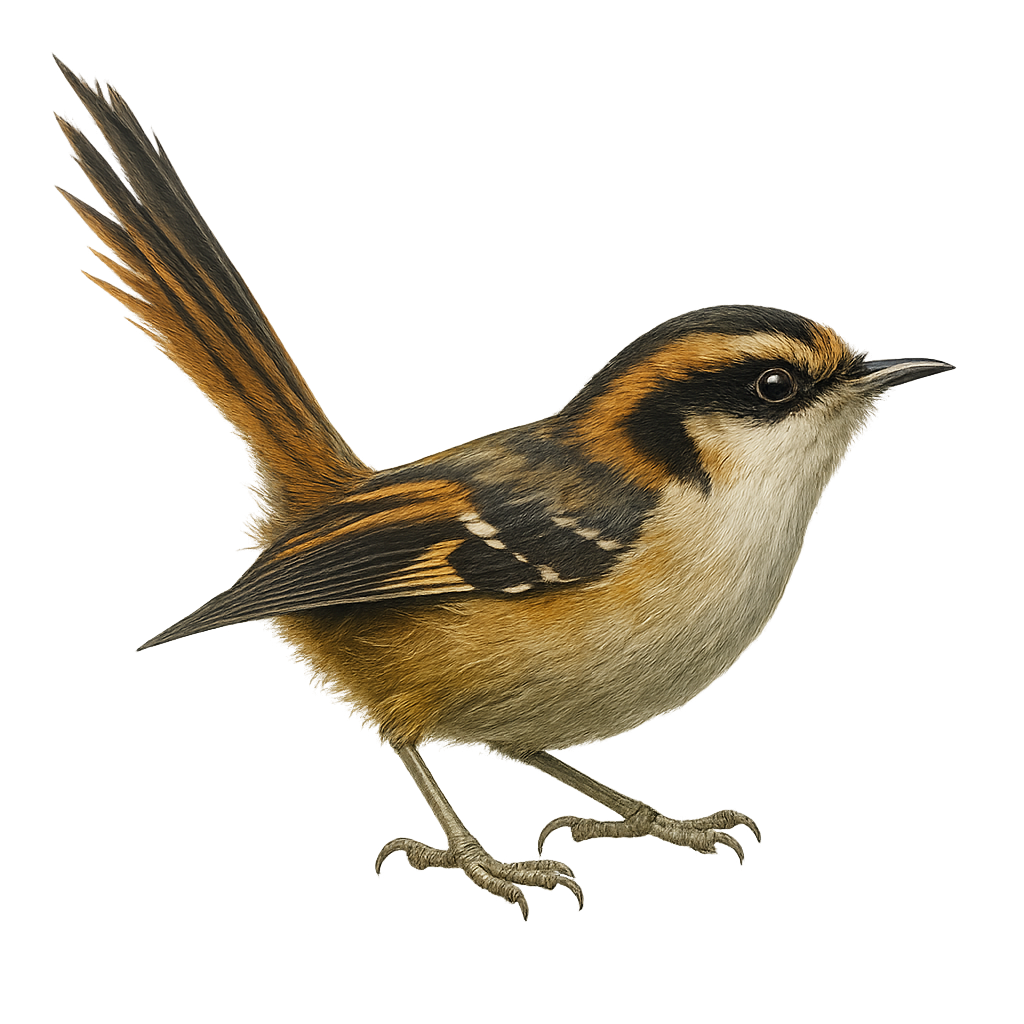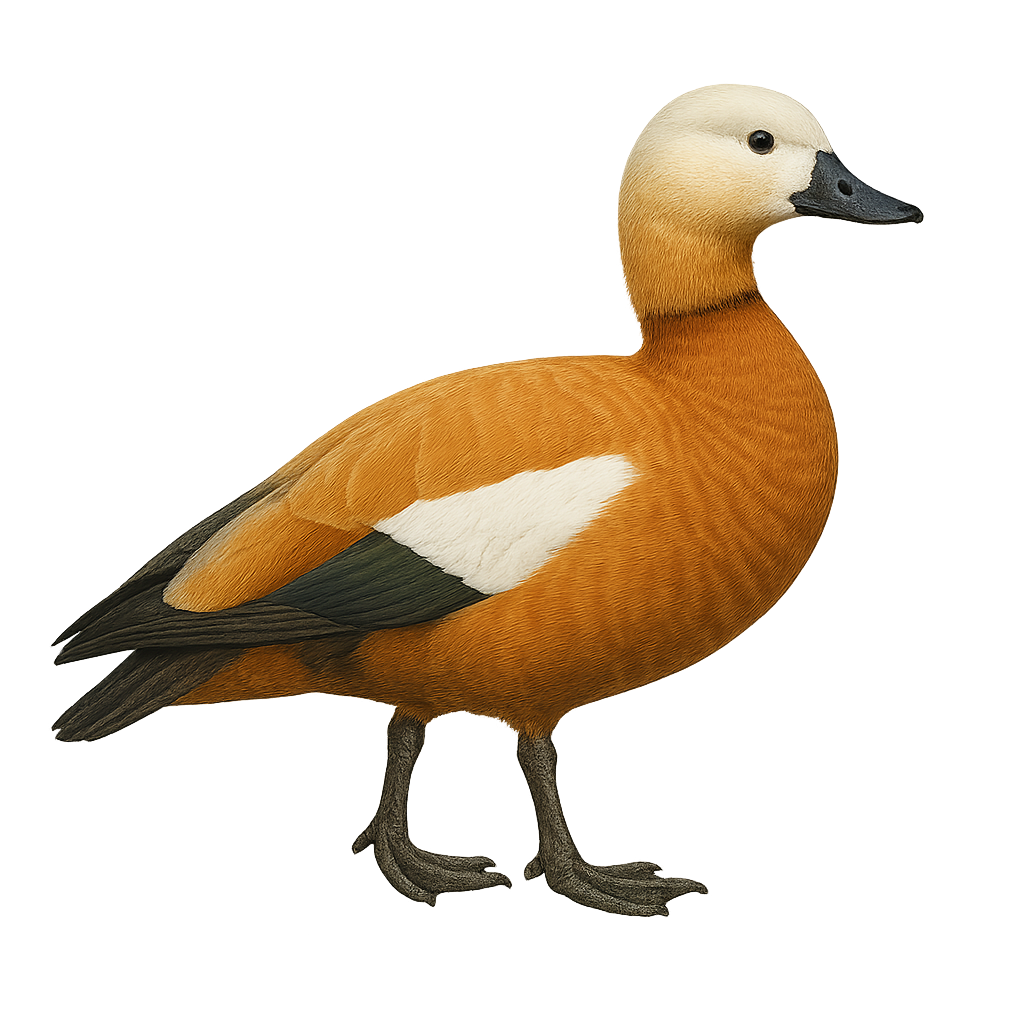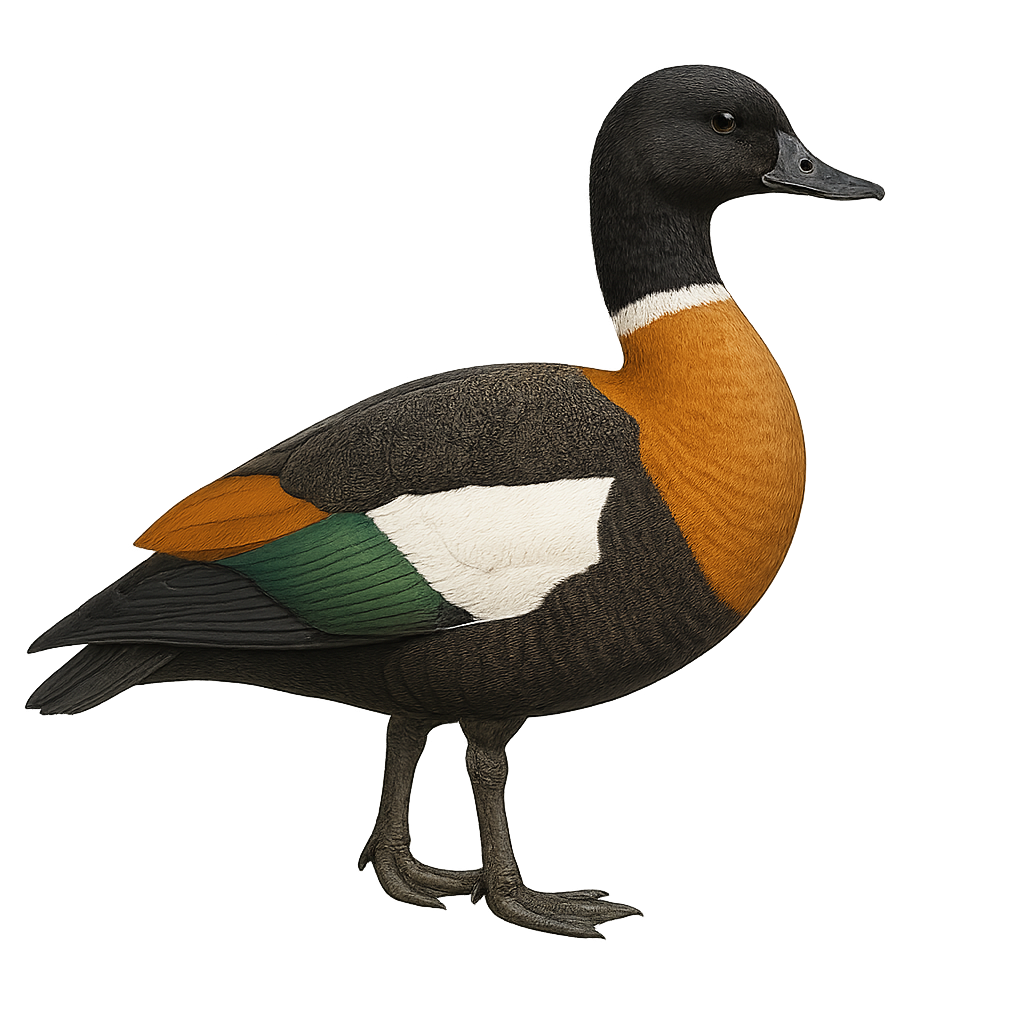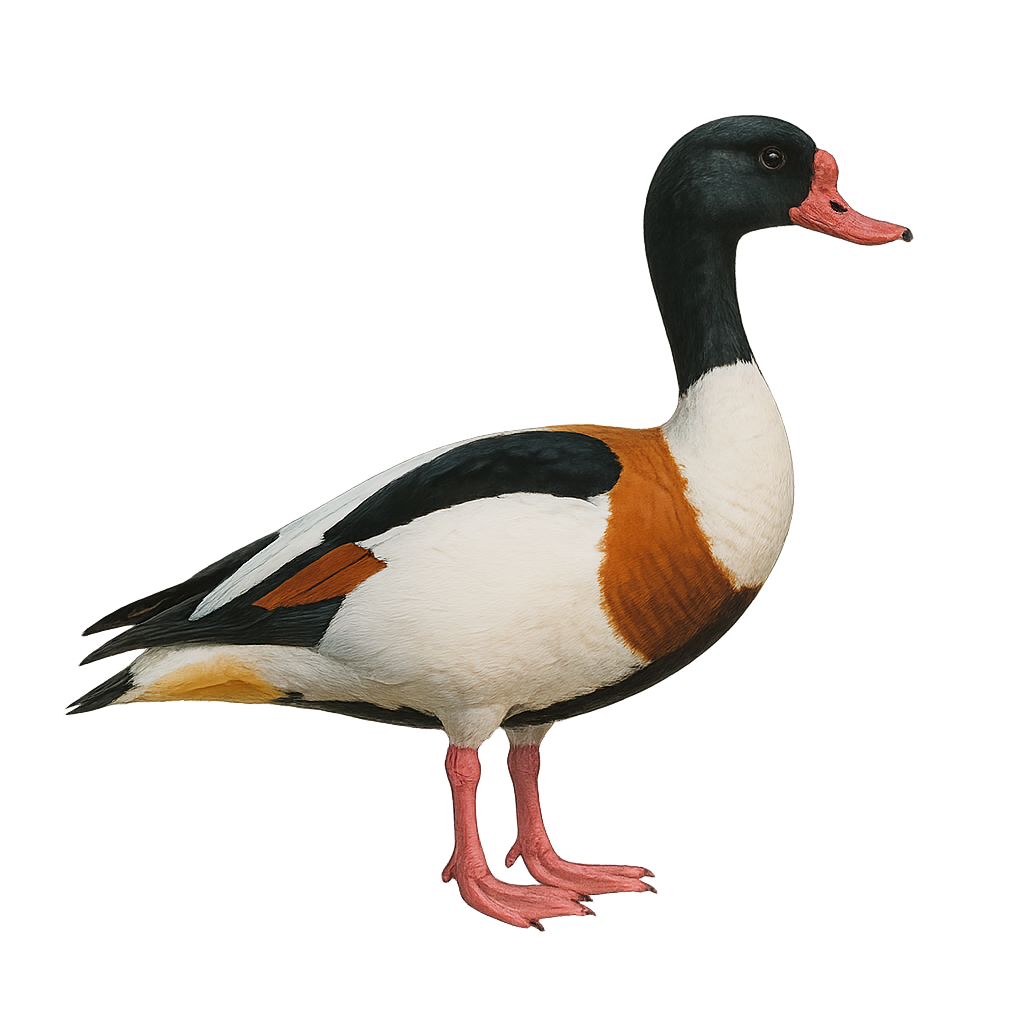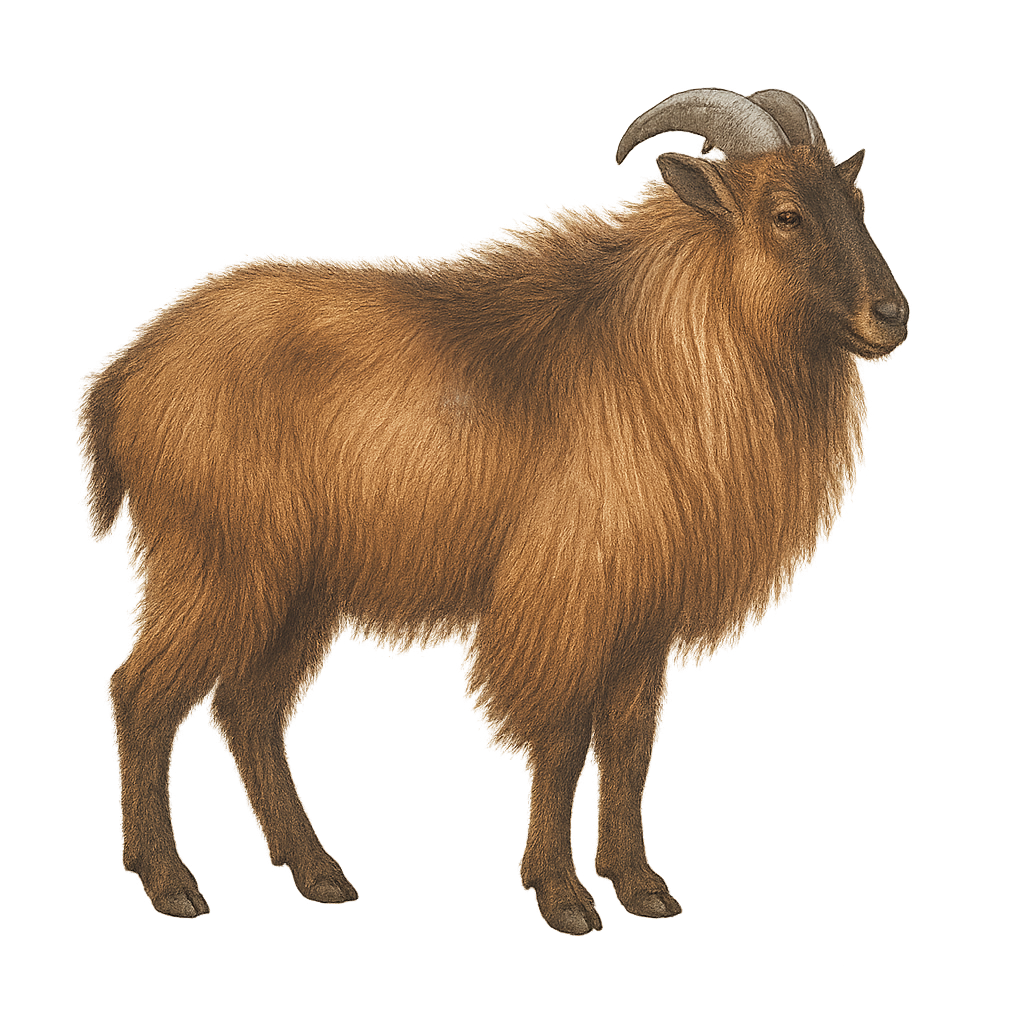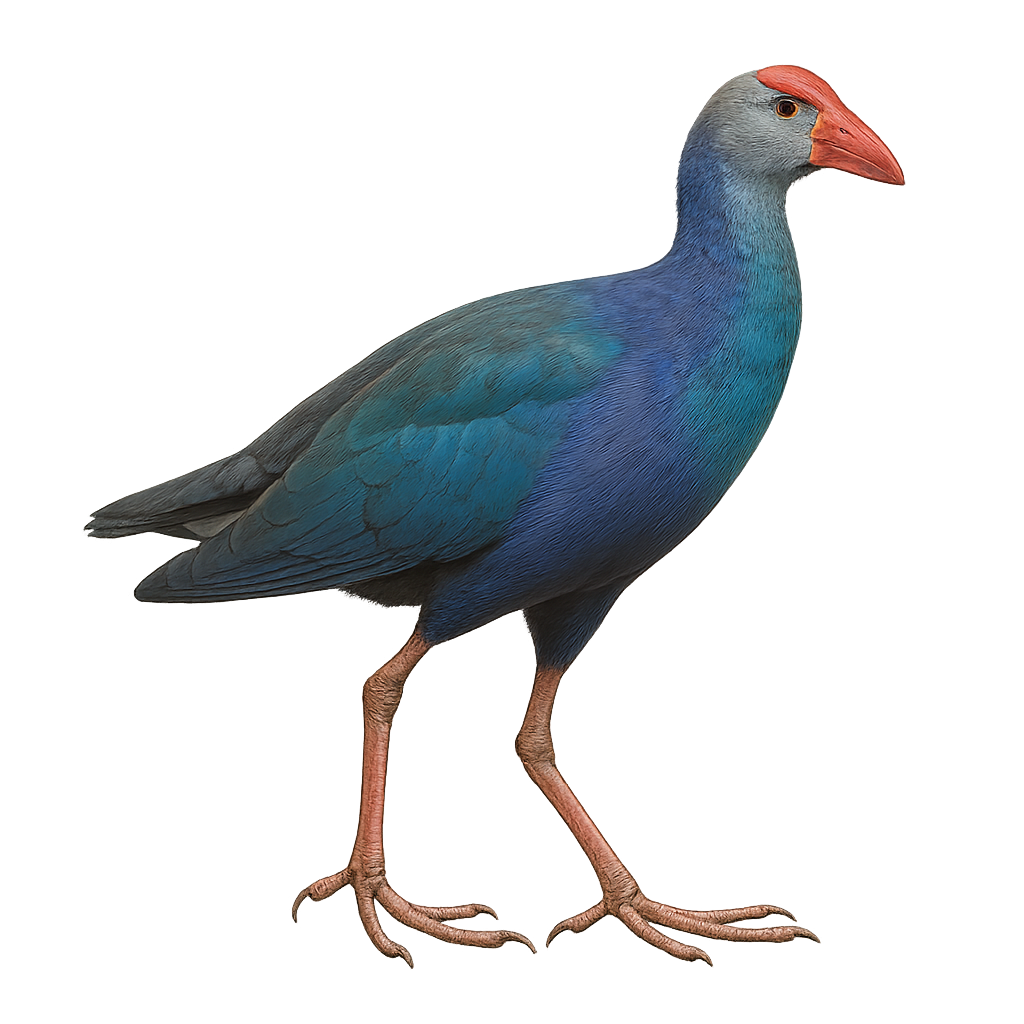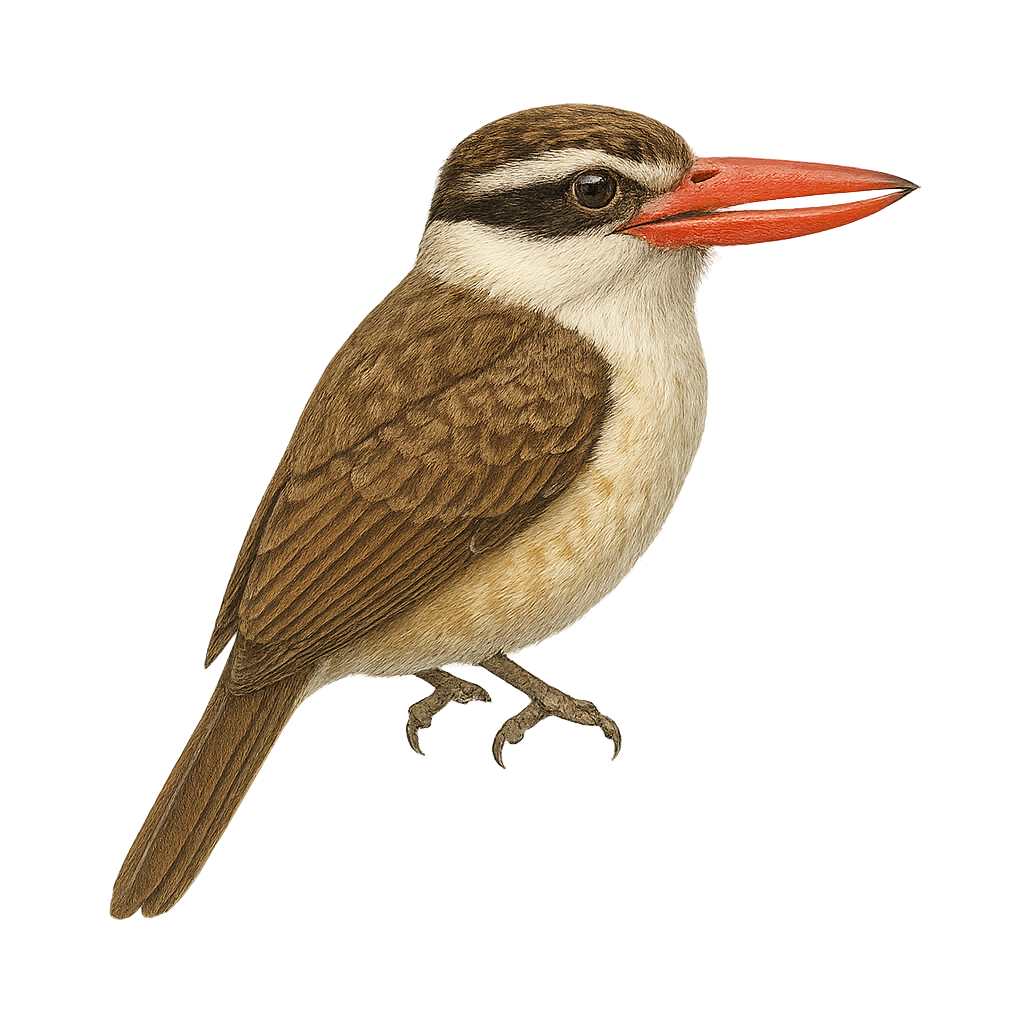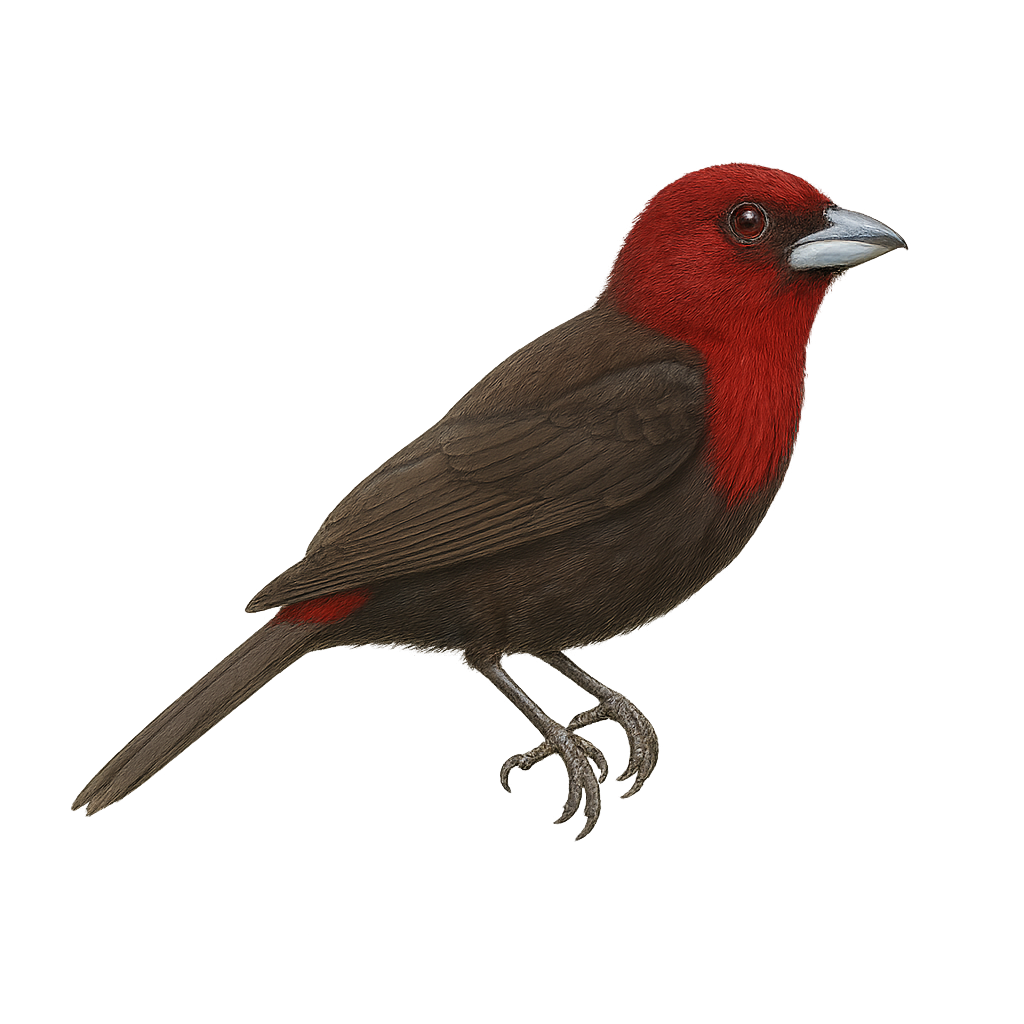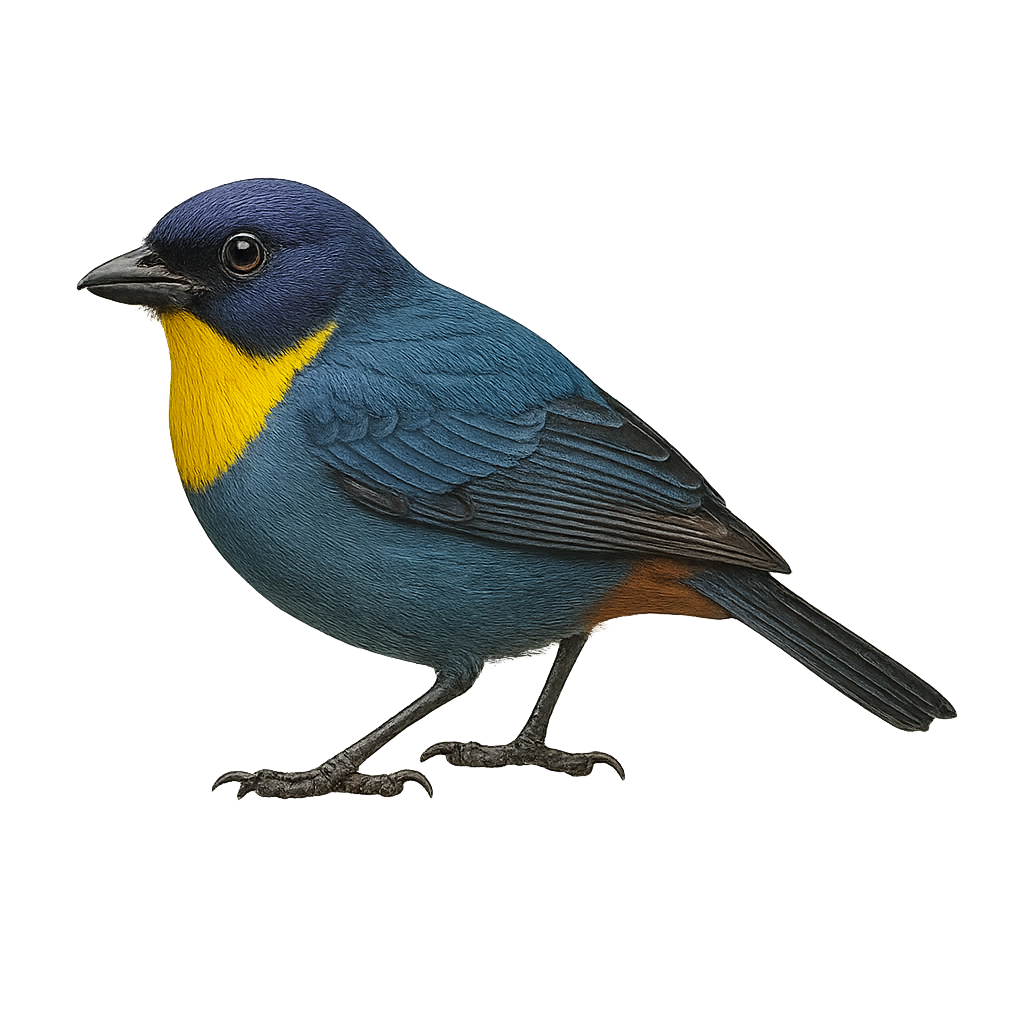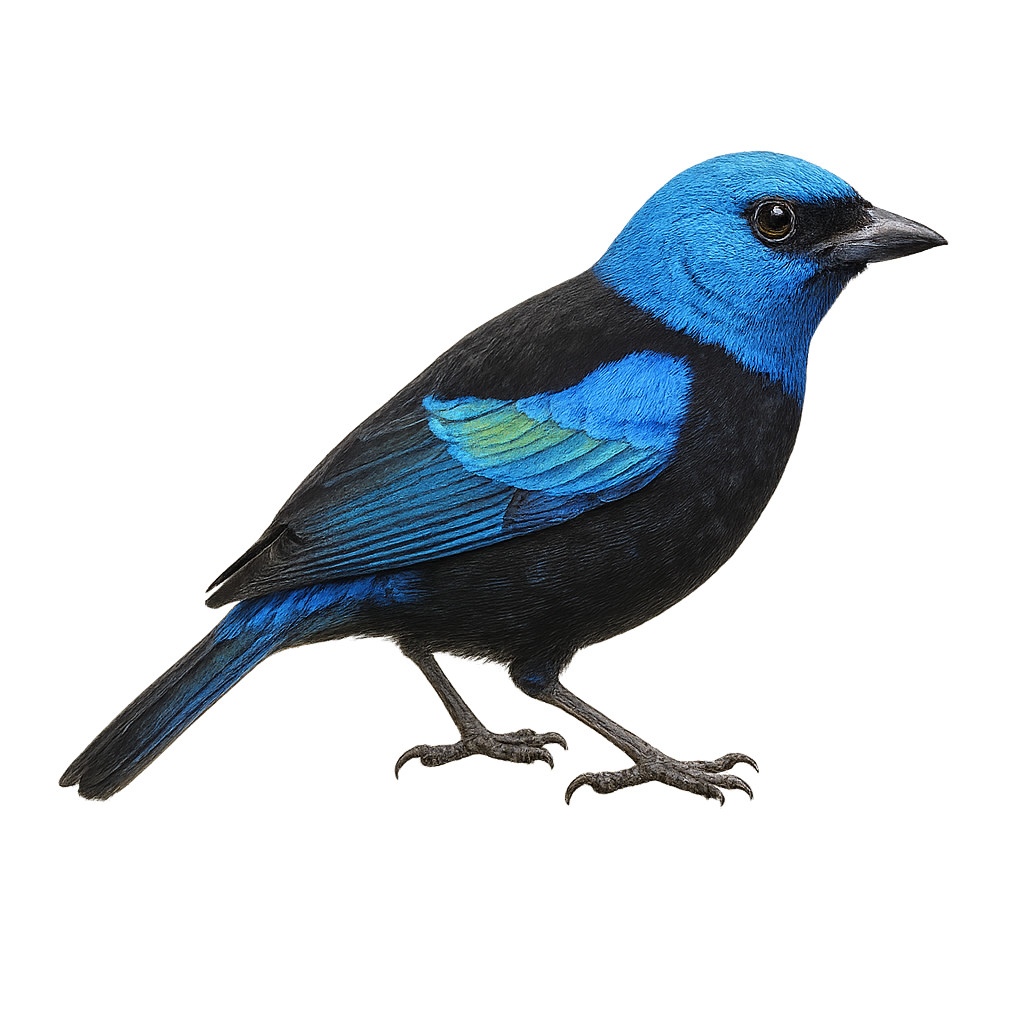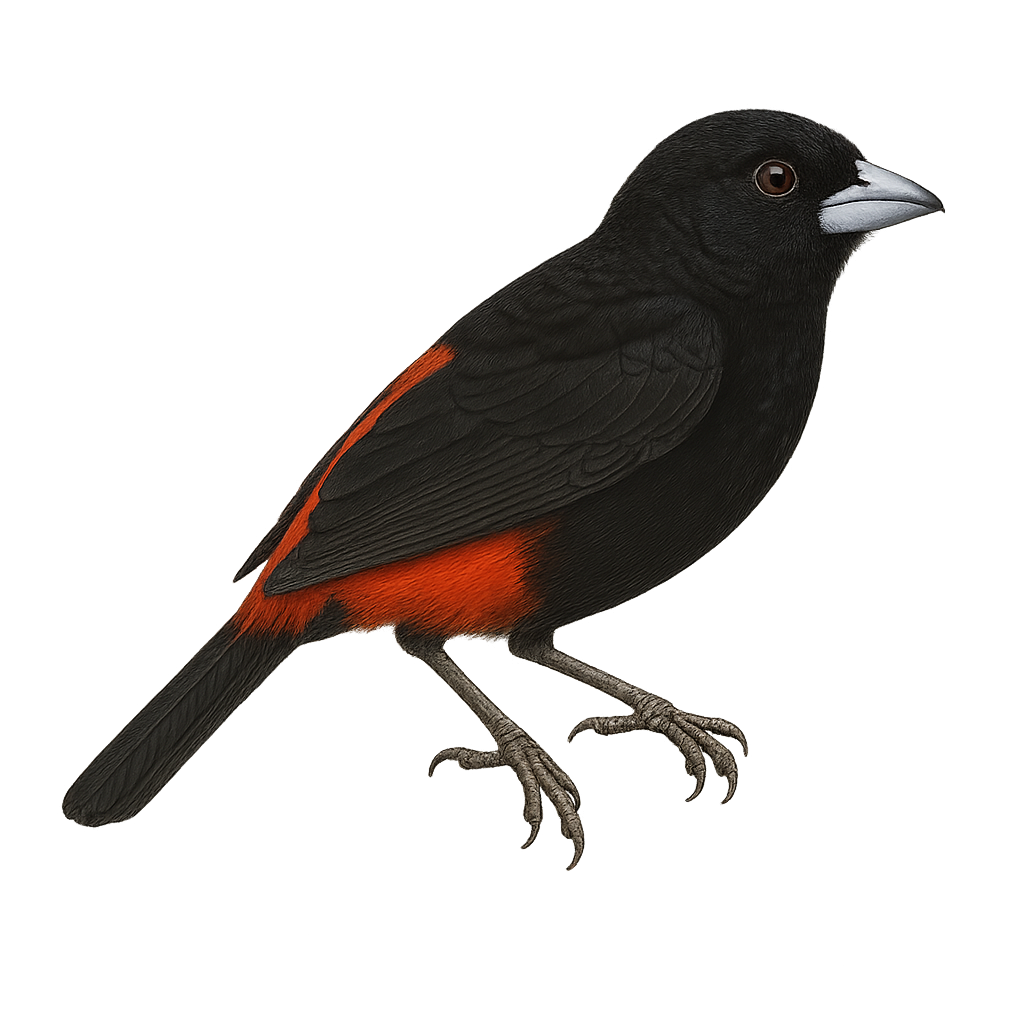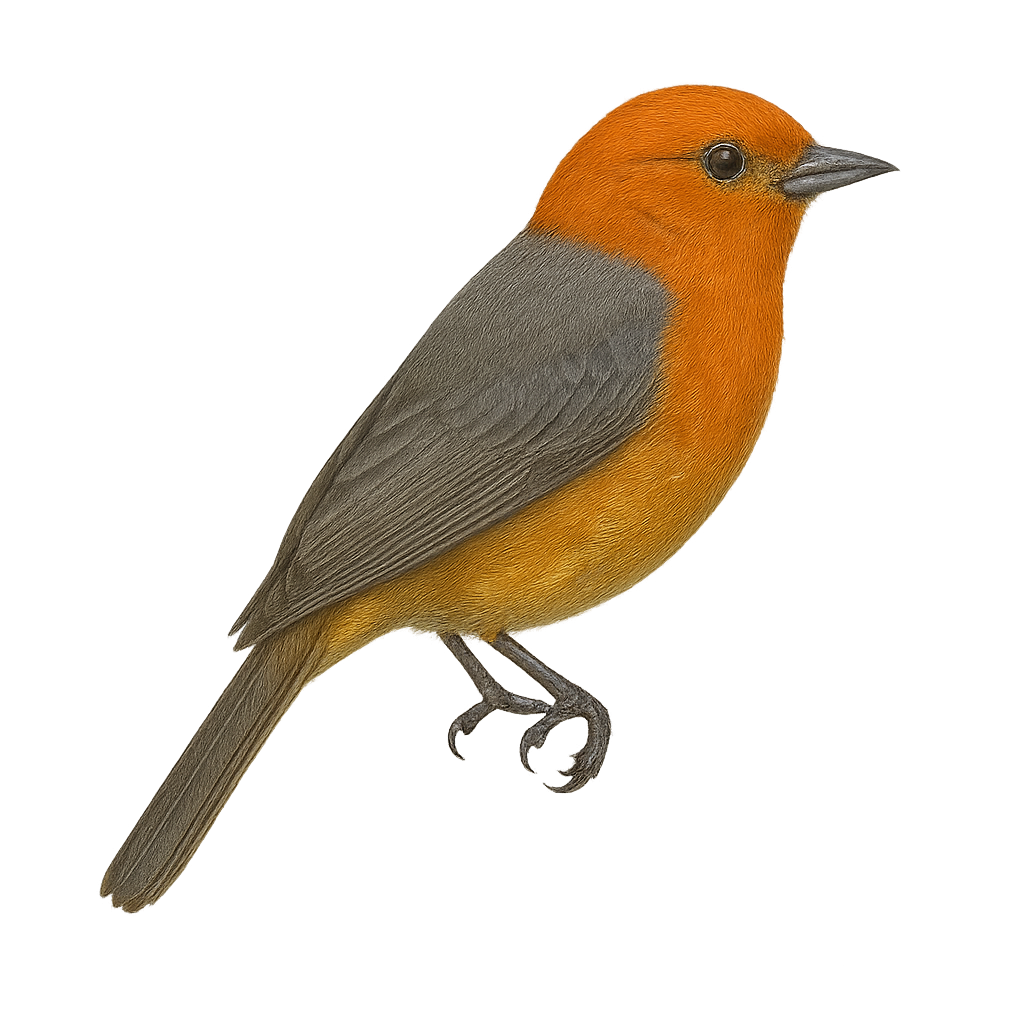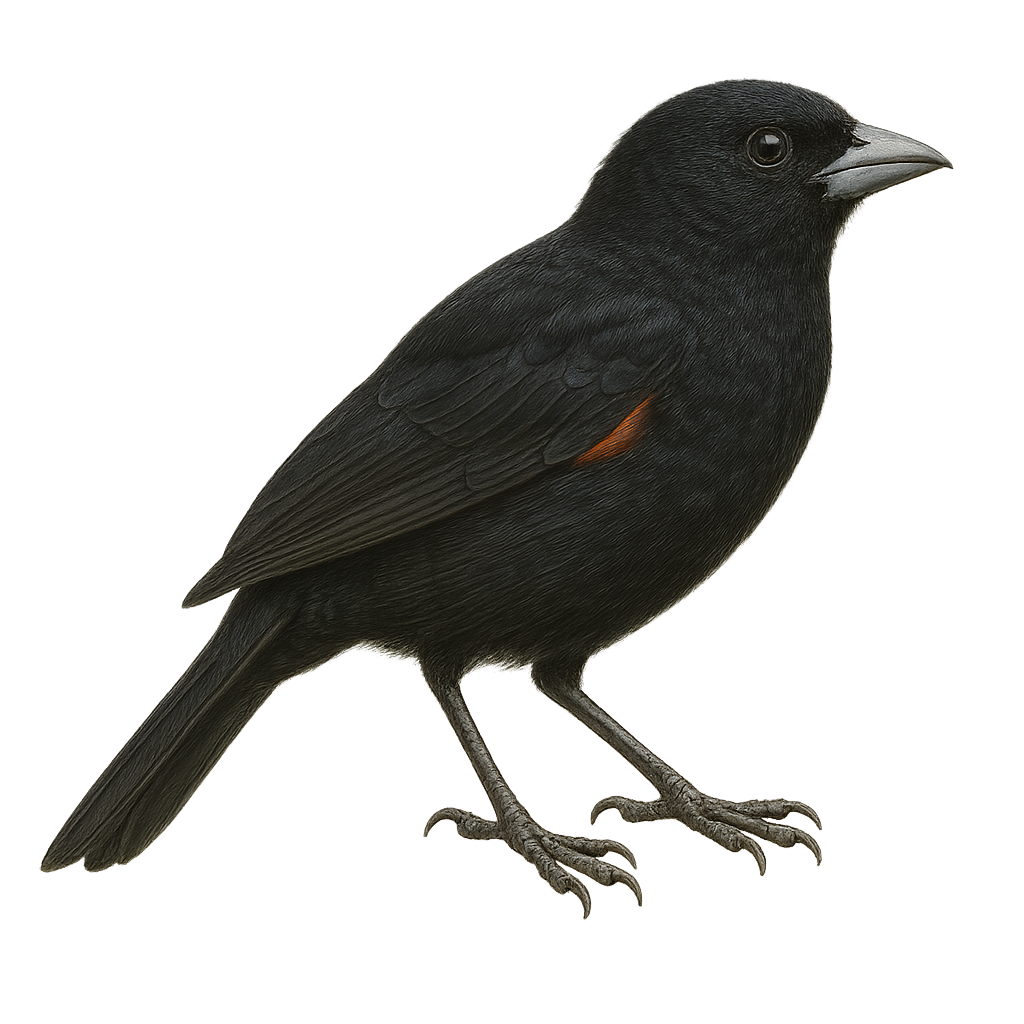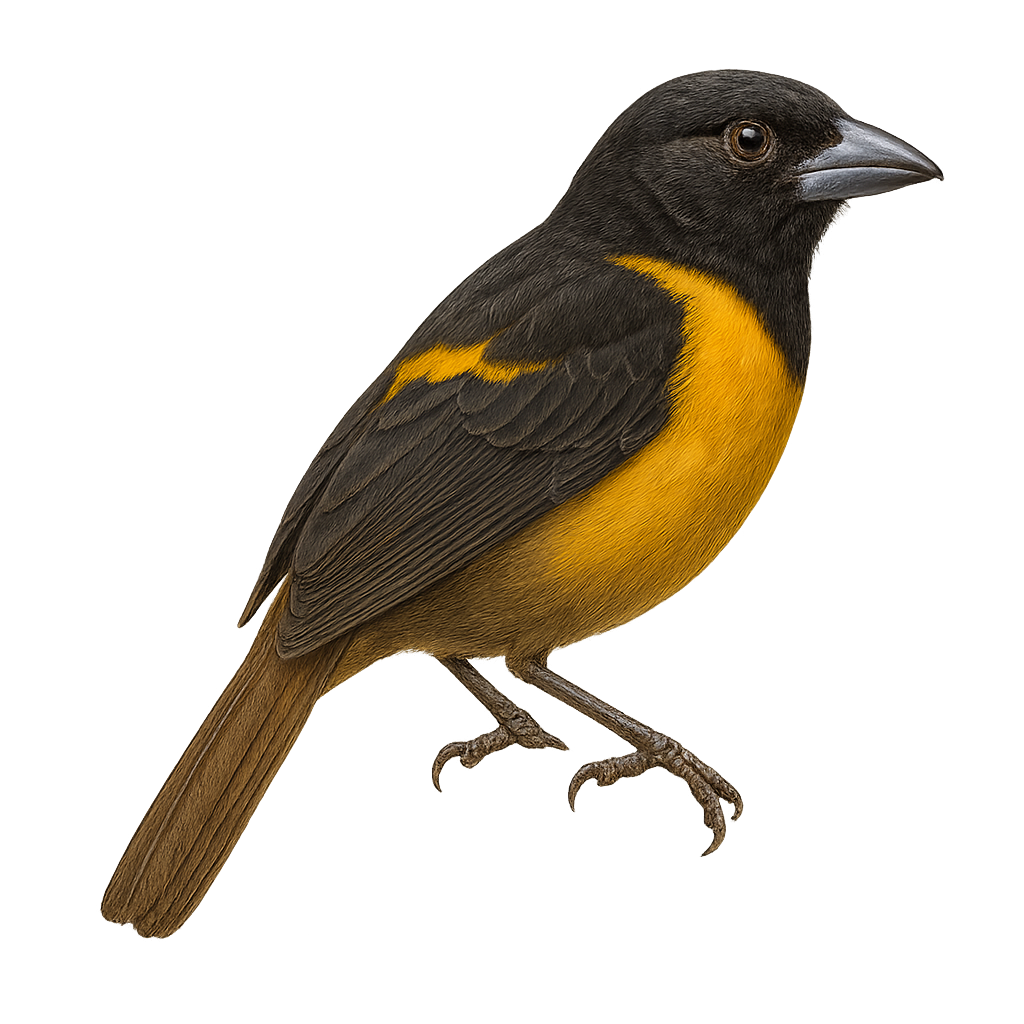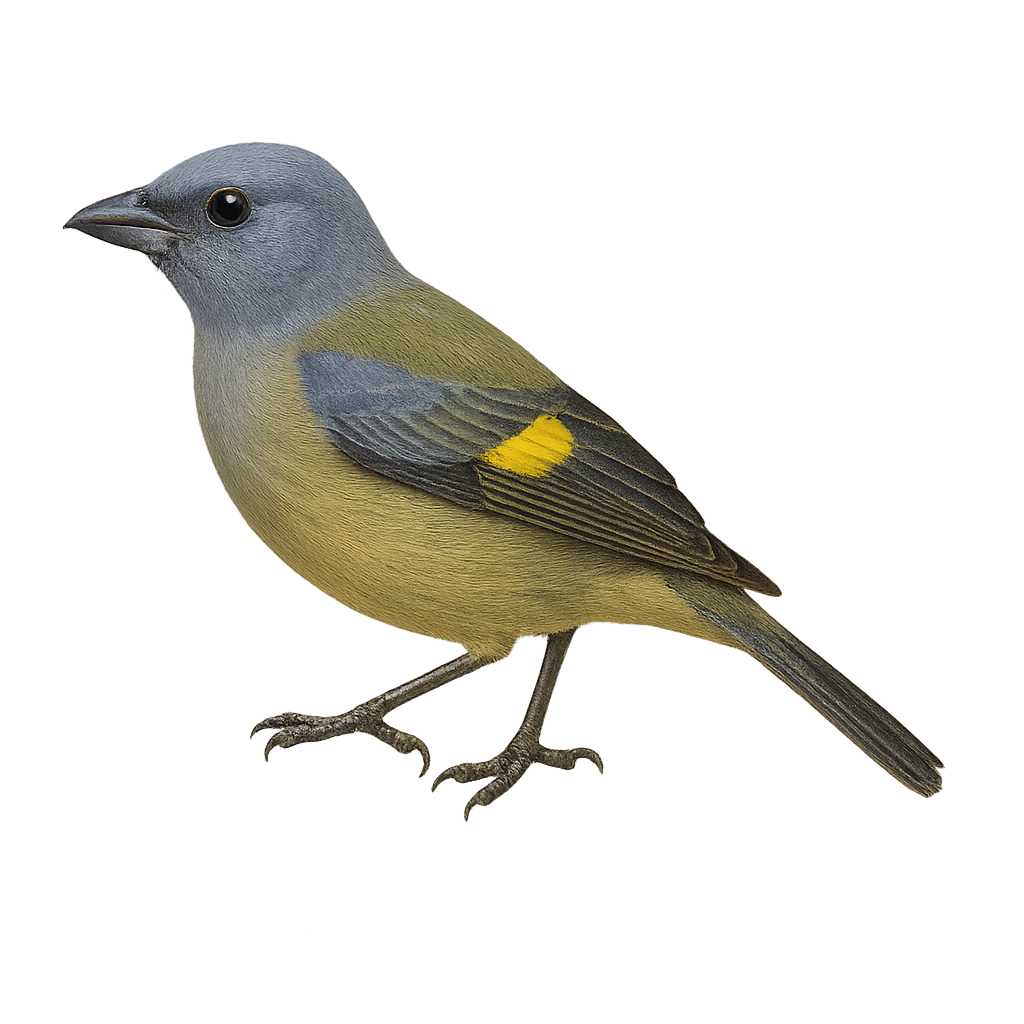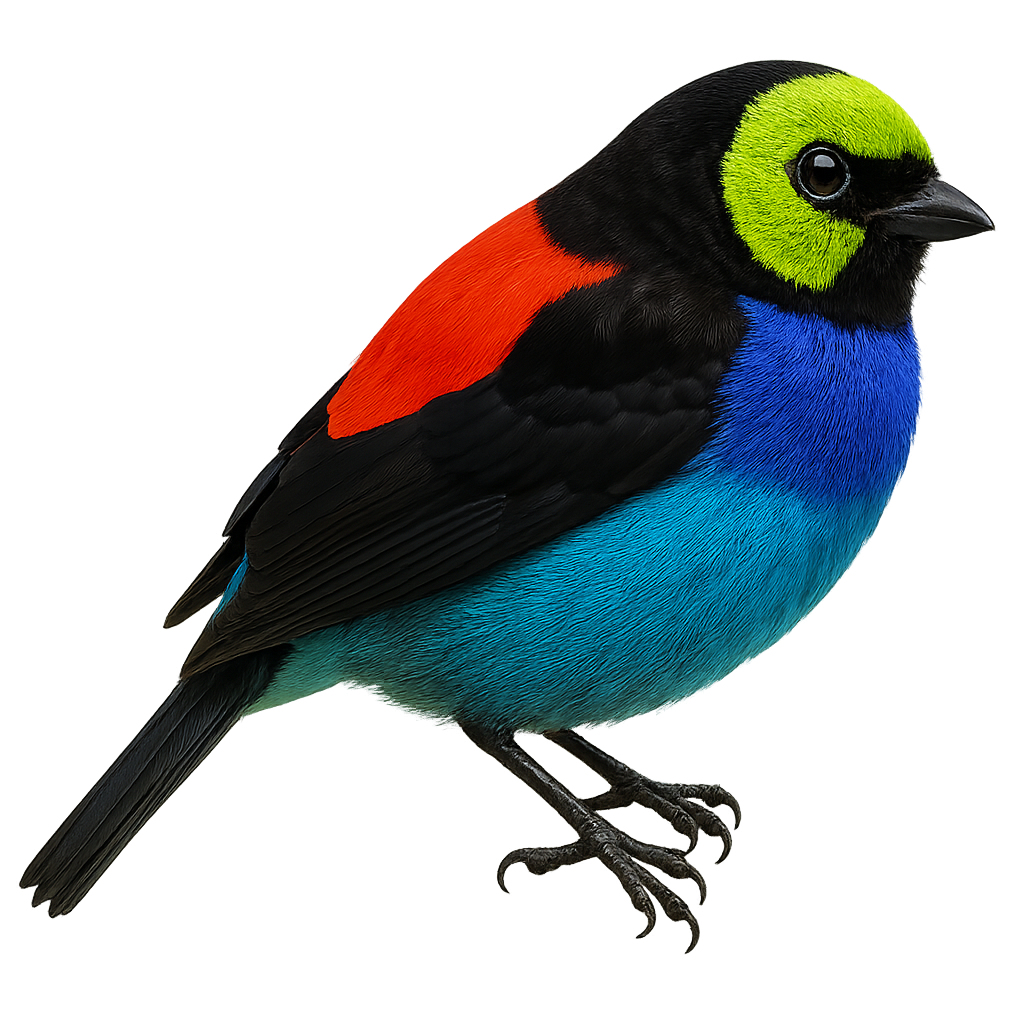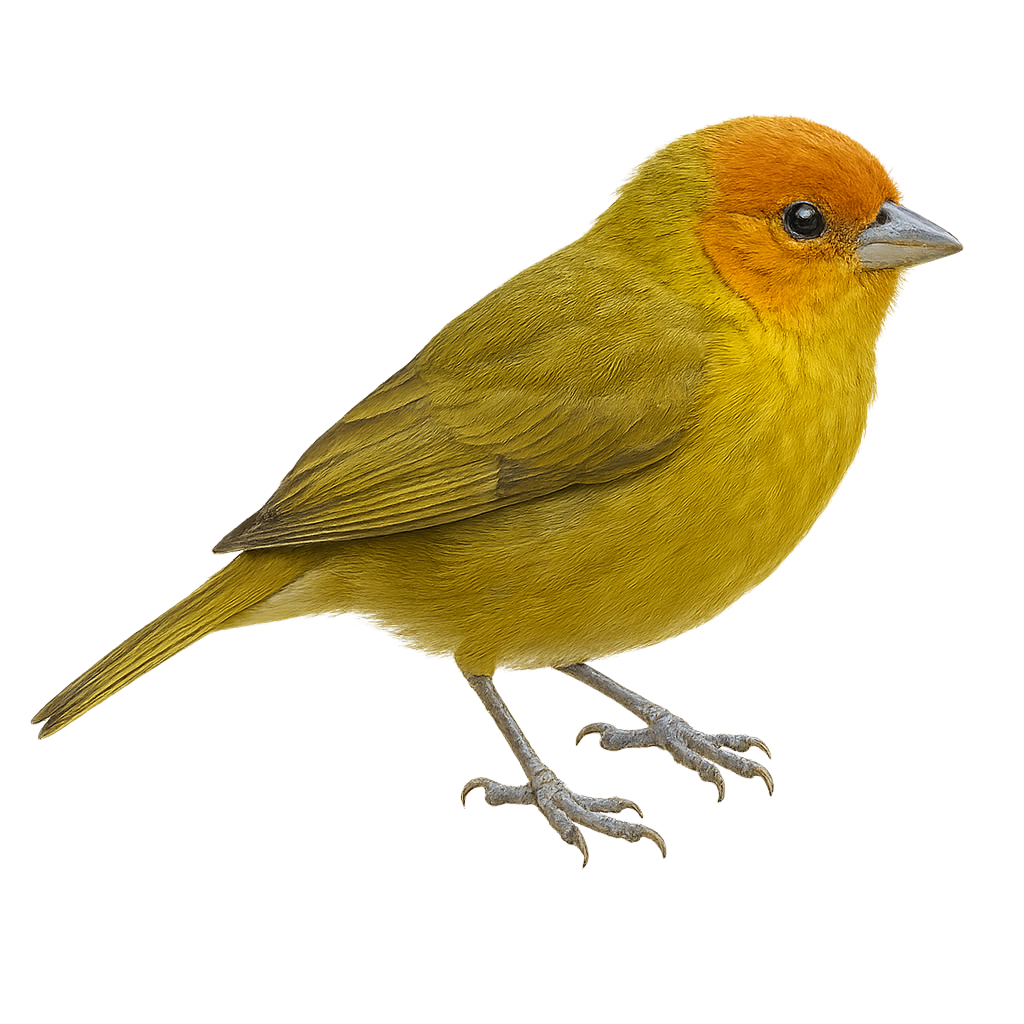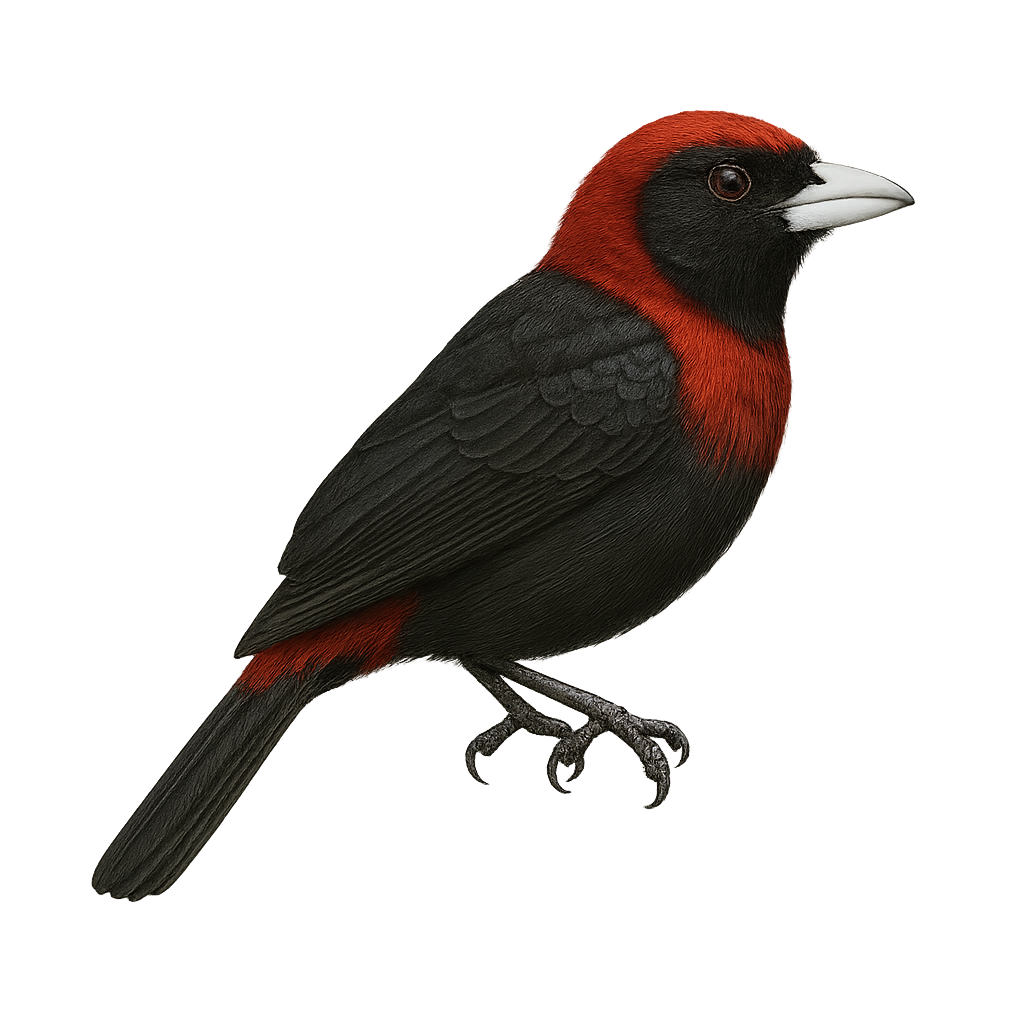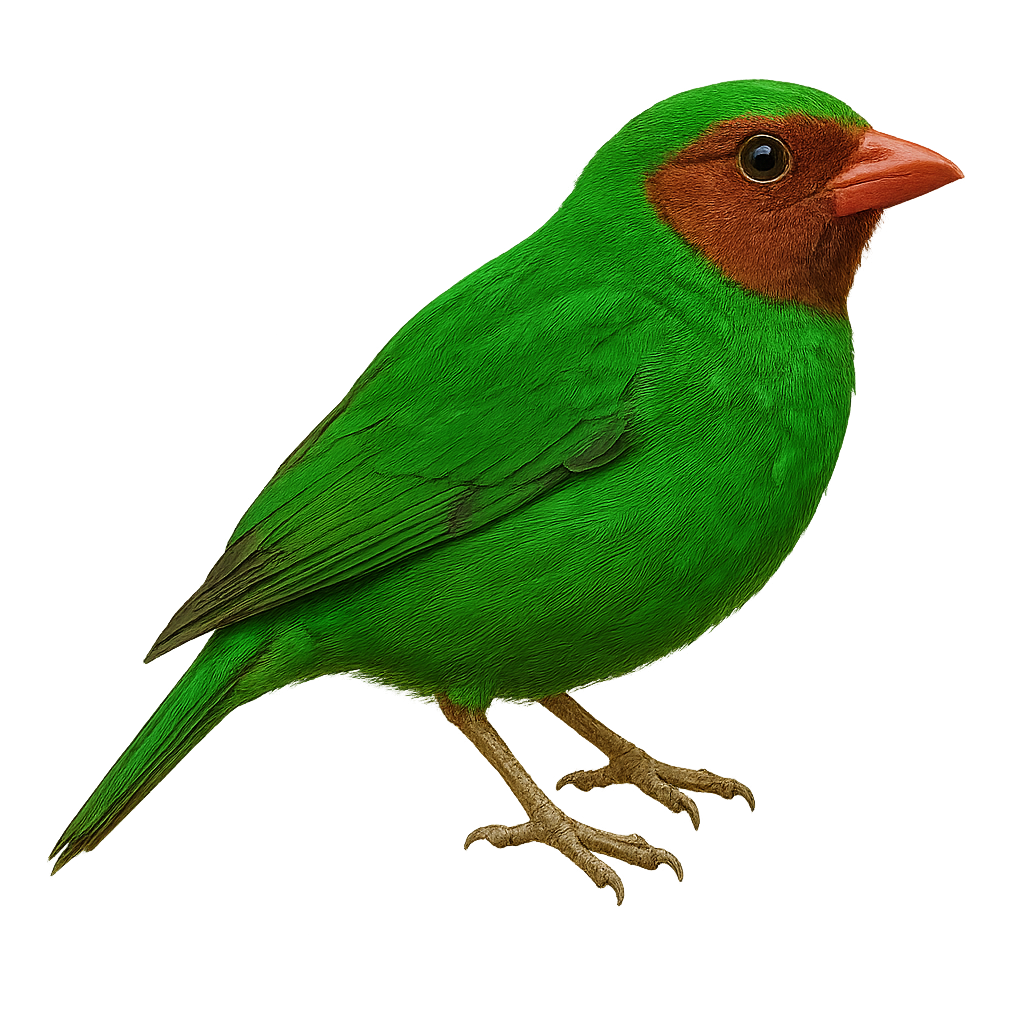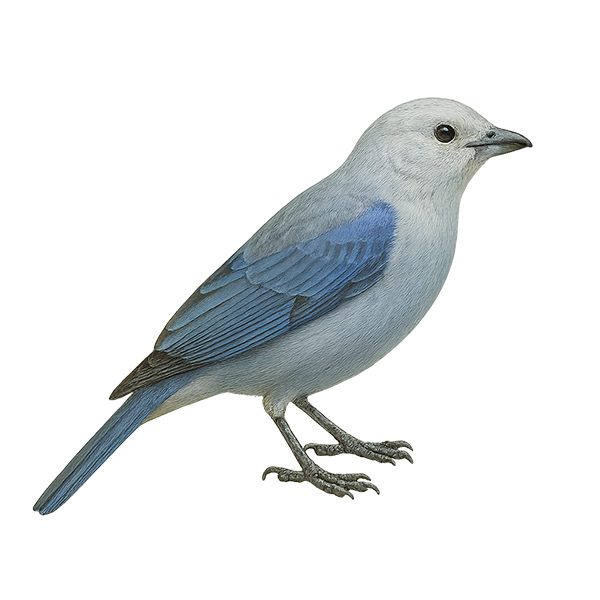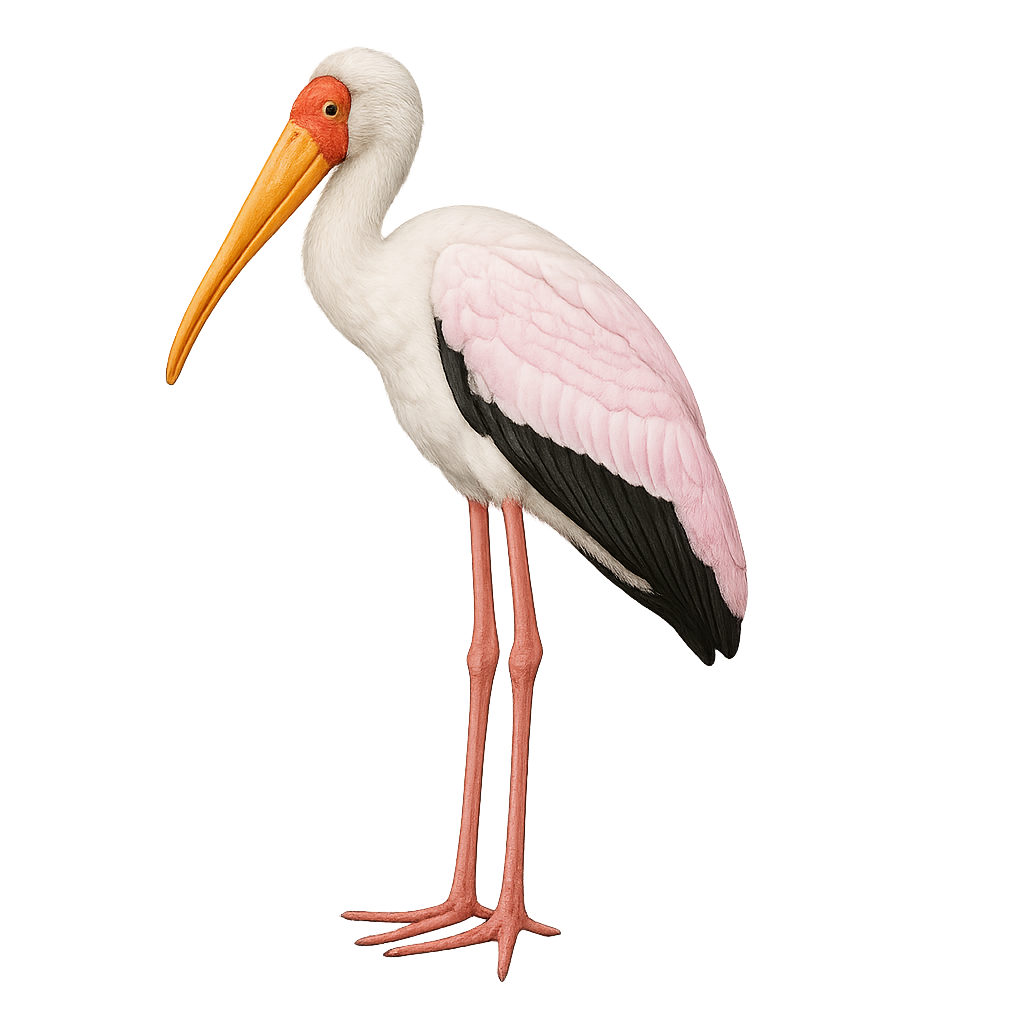The Thorn-tailed Rayadito, or Aphrastura spinicauda, is a small bird endemic to the temperate forests of southern South America, particularly in Chile and Argentina. It measures about 14 cm in length and is distinguished by its long, spiny tail, which gives it its name. Its plumage is primarily brown with shades of rufous and black, and it features a distinctive white stripe above the eye. This bird is often seen moving nimbly through branches in search of insects and spiders, which make up the bulk of its diet. Known for its social nature, it is often spotted in small groups or pairs, and is recognized for its melodious and complex song.
The Pale-breasted Spinetail is a small bird from the Furnariidae family, primarily found in South America. It is characterized by its reddish-brown plumage and lighter, almost white breast. This bird is often seen in dense undergrowth and secondary forests, where it moves nimbly in search of food. It primarily feeds on insects and small invertebrates, which it finds by foraging through foliage and low branches. The Pale-breasted Spinetail is known for its distinctive song, a series of rapid, repetitive trills that echo through its habitat. Although relatively common within its range, it remains elusive and difficult to spot due to its wary behavior and preference for densely vegetated areas.
The Ruddy Shelduck, or Tadorna ferruginea, is a medium-sized waterfowl known for its striking orange-brown plumage and pale head. Males and females look similar, though males have a black neck ring during the breeding season. This bird favors open habitats near freshwater, such as lakes and rivers. It is primarily herbivorous, feeding on aquatic plants, but may also eat insects and small invertebrates. The Ruddy Shelduck is a partial migrant, moving southward in winter. It is often seen in pairs or small groups and is known for its distinctive, melodious call.
The Radjah Shelduck, scientifically known as Tadorna tadornoides, is a medium-sized waterfowl distinguished by its striking white plumage and distinctive black markings on its wings and back. Native to Australia and New Guinea, it primarily inhabits wetlands, marshes, and rivers. This duck is often seen in pairs or small groups, feeding on aquatic plants, insects, and small crustaceans. Its breeding season typically coincides with the rainy season, providing a resource-rich environment for raising its young. The Radjah Shelduck is appreciated for its beauty and relatively tolerant behavior, making it a favored subject for wildlife photographers.
The Common Shelduck is a large duck with a distinctive plumage, measuring between 58 and 67 cm in length. It is identified by its glossy greenish-black head, white body with a broad chestnut band, and bright red bill. Males have a prominent knob at the base of the bill, which females lack. This species inhabits estuaries, lagoons, salt marshes, tidal mudflats, and shallow lake shores, often in flocks. It nests in burrows or cavities, sometimes dug into dunes or embankments. The shelduck primarily feeds on aquatic invertebrates such as mollusks, worms, and crustaceans, filtered from the mud. While generally secure, it is vulnerable to coastal wetland destruction.
The Arabian tahr, Hemitragus jayakari, is a species of wild goat native to the arid mountains of Oman and the United Arab Emirates. This robust mammal is well adapted to rugged, rocky terrains, where it primarily feeds on grasses, leaves, and fruits. Males are distinguished by their thick, curved horns, while females have smaller horns. Its dense, brownish coat allows it to blend into its rocky environment. The Arabian tahr is a gregarious animal, living in small groups, although adult males are often solitary. This species is threatened by habitat loss and hunting, leading to its classification as vulnerable by the IUCN.
The Takin is a large herbivore found primarily in the mountainous regions of the Himalayas and China. It typically stands between 1.2 and 1.5 meters at the shoulder, with a body length of 1.5 to 2 meters, and weighs between 250 and 350 kg. Its fur is dense and ranges from golden to light brown, with longer hair around the throat and shoulders, giving it a robust appearance. The Takin is an excellent climber and primarily feeds on woody vegetation, leaves, young shoots, and fruits. It lives in social groups and is mainly active at dawn and dusk. While its population remains relatively stable in certain areas, this species is threatened by deforestation and human activities, including hunting and encroachment on its natural habitat.
The Purple Swamphen, or Porphyrio porphyrio, is a striking waterbird known for its vivid blue-purple plumage and bright red bill. It primarily inhabits marshes, lakes, and wetlands with dense vegetation. This bird is recognized for its graceful walk and swimming ability. The Purple Swamphen is omnivorous, feeding on aquatic plants, insects, and small animals. It is often seen walking on water lilies thanks to its long toes. Although generally discreet, it can be noisy, emitting loud and varied calls. Its presence is an indicator of healthy aquatic ecosystems.
The Southern Tamandua is an arboreal anteater found primarily in South America. It is recognizable by its beige and black fur, which allows it to blend into the trees. It has a long sticky tongue, ideal for capturing ants and termites, which make up the bulk of its diet. This mammal is mainly nocturnal and spends the day resting in trees. Although generally solitary, it can sometimes be seen in pairs. Its prehensile tail allows it to move easily through the trees, and it uses its powerful claws to defend itself against predators.
The Mexican Tamandua, or Tamandua mexicana, is an insectivorous mammal primarily found in the tropical and subtropical forests of Mexico, Guatemala, and Honduras. It typically measures between 50 and 70 cm in length, with a tail of 40 to 50 cm, and weighs between 4 and 7 kg. Its fur is generally yellow-brown, with a black mask around the eyes and a wide black band on its back. This tamandua has a long tongue, which can reach up to 40 cm, used to catch termites and ants, its main food source. The Mexican Tamandua is also an excellent climber, spending much of its time in trees. It is generally nocturnal and primarily feeds on insects and occasionally fruits. While its population remains relatively stable, it is sometimes threatened by deforestation and the loss of its natural habitat.
The Golden Lion Tamarin is a small primate found primarily in the tropical forests of southeastern Brazil. It typically measures about 20 to 30 cm in length, with a tail of 35 to 45 cm, and weighs between 500 and 700 g. Its fur is a bright golden orange, giving it a distinctive and striking appearance. The Golden Lion Tamarin is known for its small size, great agility, and complex social behaviors. It lives in family groups and primarily feeds on fruits, insects, nectar, and small vertebrates. Although it is an excellent climber and spends most of its time in trees, this species is threatened by deforestation, habitat loss, and illegal wildlife trade.
The White-eared Puffbird, scientifically known as Nystalus chacuru, is a medium-sized bird belonging to the Bucconidae family. It is characterized by its brown and white plumage, with a distinctive white band on the forehead and around the eyes. This bird is primarily found in South America, particularly in Brazil, Bolivia, and Paraguay. It inhabits dry forests, savannas, and open wooded areas. The White-eared Puffbird is an opportunistic predator, feeding mainly on insects and small vertebrates. It is known for its melodious and repetitive song, often heard at dawn. Although relatively tolerant of human presence, it prefers habitats with dense vegetation, providing protection from predators.
The Silver-beaked Tanager, or Ramphocelus carbo, is a medium-sized bird known for its striking plumage. The male features a bright red back contrasting with a black belly, while the female displays more subdued tones. It is primarily found in the humid tropical forests of South America, particularly in the Amazon. This bird is often seen in small groups, feeding on fruits and insects. Its melodious song and vibrant colors make it a favorite among birdwatchers and photographers. Although relatively common, deforestation threatens its natural habitat. The Silver-beaked Tanager plays a crucial role in seed dispersal, aiding forest regeneration.
The Purplish-mantled Tanager, scientifically known as Iridosornis porphyrocephalus, is a vibrant bird belonging to the Thraupidae family. It inhabits the humid forests of the Andes, where its striking plumage stands out. The bird's head is a distinctive purplish hue, contrasting with a body of blue and green shades. It measures about 15 cm in length and weighs between 20 and 30 grams. Its diet consists mainly of insects and fruits found in the dense canopy. Although discreet, it is often detected by its melodious song. The Purplish-mantled Tanager is an important indicator of the health of Andean forest ecosystems, and its presence signifies a rich and preserved biodiversity.
The Blue-necked Tanager, scientifically known as Tangara cyanicollis, is a vibrant bird belonging to the Thraupidae family. It is easily identifiable by its striking blue head and neck, contrasting with a black body and green wings. This bird measures about 13 cm in length and weighs between 16 and 19 grams. It is primarily found in the humid tropical forests of South America, particularly in Colombia, Peru, Bolivia, and Brazil. The Blue-necked Tanager feeds mainly on fruits, nectar, and insects. It is often seen in small groups or pairs, actively moving through the canopy in search of food.
The Passerini's Tanager, or Ramphocelus passerinii, is a colorful and fascinating bird found mainly in Central America, particularly in Costa Rica and Panama. This bird features a glossy black plumage with a bright red back, making it easily recognizable. Males and females show slight differences in coloration, with females having duller shades. They typically inhabit tropical rainforests, forest edges, and plantations, where they primarily feed on fruits and insects. Their song is soft and melodious, often heard at dawn. Although they are relatively tolerant of human presence, they prefer habitats with dense vegetation.
The Rufous-chested Tanager, or Thlypopsis ornata, is a small, colorful bird belonging to the Thraupidae family. It is primarily found in the mountainous regions of South America, particularly in Colombia, Ecuador, and Peru. This bird is notable for its vibrant plumage, featuring a rufous chest and wings with shades of gray and brown. It mainly inhabits humid forests and wooded areas, often at altitudes between 1500 and 3000 meters. The Rufous-chested Tanager is a diurnal bird, active mainly during the day, and feeds primarily on insects and fruits. Although generally suspicious, it can sometimes be seen in small groups.
The Red-crowned Ant-Tanager, Tachyphonus phoenicius, is a medium-sized bird known for its striking red head contrasting with its brownish body. It primarily inhabits the humid tropical forests of Central and South America. Often seen in small groups, this bird feeds on insects and fruits. Its melodious song and vibrant colors make it a favorite among birdwatchers. Although relatively common, its population is threatened by deforestation. Preserving its natural habitat is crucial for its survival. The Red-crowned Ant-Tanager plays a vital role in seed dispersal, contributing to the health of forest ecosystems.
The Orange-backed Tanager, Lanio aurantius, is a colorful and captivating bird native to the tropical forests of Central America. It is easily recognizable by its bright orange back contrasting with the rest of its black body. This bird measures about 18 cm in length and primarily feeds on fruits, insects, and small invertebrates. It usually lives in small groups or pairs, often in the company of other tanager species. The Orange-backed Tanager is an active and vocal bird, emitting a variety of songs and calls to communicate with its peers. Although its habitat is threatened by deforestation, it remains relatively common in some areas.
The Yellow-winged Tanager, or Thraupis abbas, is a colorful and fascinating bird found primarily in the tropical and subtropical forests of Central America. This medium-sized passerine boasts a striking plumage, with distinctive yellow wings contrasting against its blue-gray body. Males and females exhibit little sexual dimorphism, although males are often slightly more vibrant. The Yellow-winged Tanager is a sociable bird, often seen in small groups, feeding mainly on fruits but also on insects. Its melodious and varied song is a delight for birdwatchers. Although relatively common in its natural habitat, it is essential to preserve the forests where it resides to ensure its long-term survival.
The Paradise Tanager, known for its vibrant plumage, is a fascinating bird from the tropical forests of South America. Its head is a bright green, contrasting with a turquoise blue body and black wings. It measures about 13 to 15 cm in length and weighs between 15 and 20 grams. This bird primarily feeds on fruits, insects, and nectar, playing a crucial role in pollination and seed dispersal. It lives in social groups and is often seen in the company of other tanager species. Its song is melodious, composed of varied and pleasant notes. Although its habitat is threatened by deforestation, it is still widely distributed and not considered endangered.
The Rufous-capped Warbler, or Thlypopsis ruficeps, is a small, colorful bird primarily found in the humid forests and wooded areas of South America. Its distinctly rufous head contrasts with its more neutral-toned body, making it a captivating sight for birdwatchers. Often seen in small groups, it moves nimbly through foliage in search of insects and fruits. Although discreet, its melodious song often betrays its presence. This tanager is a perfect example of birds adapting to specific ecological niches, using its plumage for camouflage while exploiting available food resources in its habitat.
The Crimson-collared Tanager, scientifically known as Ramphocelus sanguinolentus, is a striking bird found primarily in Central America, particularly in Mexico, Honduras, and Costa Rica. This bird is noted for its vibrant plumage, featuring a bright red back contrasted with its black head and wings. Measuring about 19 cm in length, it is often spotted in tropical rainforests and wooded areas. Its diet mainly consists of fruits, berries, and insects. The Crimson-collared Tanager is a sociable bird, often seen in small groups or pairs. Although not considered threatened, deforestation poses a potential threat to its natural habitat.
The Edwards's Tanager, scientifically known as Bangsia edwardsi, is a vibrant and captivating bird native to the humid montane forests of Colombia and Ecuador. This medium-sized passerine boasts a striking plumage with shades of blue and green that catch the eye. Often seen in small groups, it primarily feeds on fruits and insects. Its natural habitat ranges from 1,200 to 2,400 meters in altitude, where it plays a crucial role in seed dispersal, aiding forest regeneration. Although its conservation status is concerning, efforts are underway to protect its habitat and ensure its long-term survival.
The Grass-green Tanager, or Chlorornis riefferii, is a vibrant and fascinating bird primarily found in the humid forests of the Andes. With its bright green plumage, it is distinguished by a reddish head and a robust beak. This bird measures about 20 cm in length and feeds mainly on fruits, insects, and nectar. It is often seen in small groups, moving nimbly through dense foliage. Although its habitat is relatively stable, deforestation poses a potential threat. The Grass-green Tanager is a symbol of Andean biodiversity and plays a crucial role in seed dispersal, contributing to the health of its ecosystem.
The Bishop Tanager is a small, colorful bird found primarily in the tropical forests and wooded areas of Central and South America, notably in Costa Rica, Panama, Colombia, and Venezuela. It typically measures about 18 cm in length and weighs between 20 and 30 g. Its plumage is especially vibrant, with shades of green, yellow, and red, giving it a striking appearance, which is why it is named as such. The Bishop Tanager is frugivorous, primarily feeding on fruits, berries, and seeds, but it can also eat insects. This bird is known for its social behaviors, living in small groups or pairs, and is often observed moving through trees in search of food. While its population remains stable, it is sometimes threatened by deforestation and the loss of its natural habitat.
The Blue-gray Tanager, known for its striking blue-gray plumage, is a medium-sized bird found primarily in Central and South America. Its plumage is a blend of pale blue and gray, with brighter shades on the wings and tail. Often seen in pairs or small groups, it feeds on fruits, nectar, and insects. This bird is highly adaptable and can be found in various habitats, including tropical forests, gardens, and urban areas. The Blue-gray Tanager is cherished for its melodious song and sociable nature, making it a favorite among bird watchers.
The Fulvous Shrike-Tanager, scientifically known as Lanio fulvus, is a medium-sized bird belonging to the Thraupidae family. It is characterized by its predominantly tawny plumage, with shades of brown and gray, and a sturdy beak suited for its varied diet. Found mainly in the humid tropical forests of Central and South America, it feeds on fruits, insects, and occasionally small vertebrates. This bird is often seen in groups, which helps it protect itself from predators. Although its habitat is threatened by deforestation, the Fulvous Shrike-Tanager is currently classified as "Least Concern" by the IUCN.
The Wood Stork, or Mycteria americana, is a large wading bird known for its striking white plumage contrasted by its black head and neck. It has a long, sturdy bill, slightly curved, perfect for catching aquatic prey. This majestic bird primarily inhabits wetlands, such as marshes and mangroves, where it feeds on fish, crustaceans, and insects. The Wood Stork is often seen in groups, making it easier to spot. Although it is relatively tolerant of human presence, it is essential to maintain a respectful distance to avoid disturbing its natural behavior. Its breeding season varies by region but generally coincides with the rainy season, ensuring an abundance of food for the young.
The Yellow-billed Stork, or Mycteria ibis, is a large wading bird known for its distinctive downward-curved yellow bill and predominantly white plumage with contrasting black wings. It inhabits the wetlands of sub-Saharan Africa, feeding on fish, crustaceans, and insects. This gregarious bird is often seen in groups, especially during the breeding season. The Yellow-billed Stork nests in trees, often in mixed colonies with other wading birds. Although not currently threatened, habitat degradation poses a potential risk to its populations.


